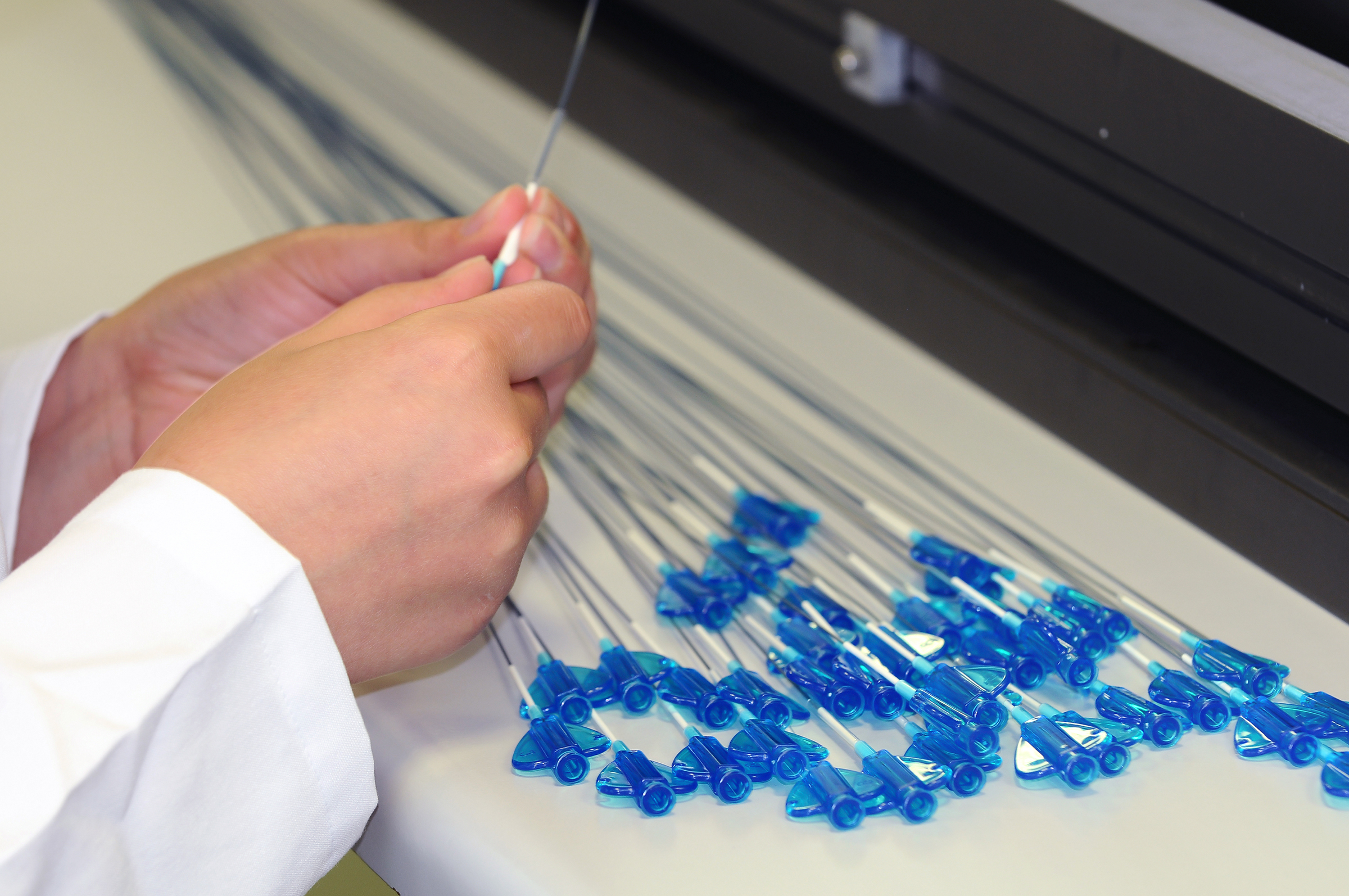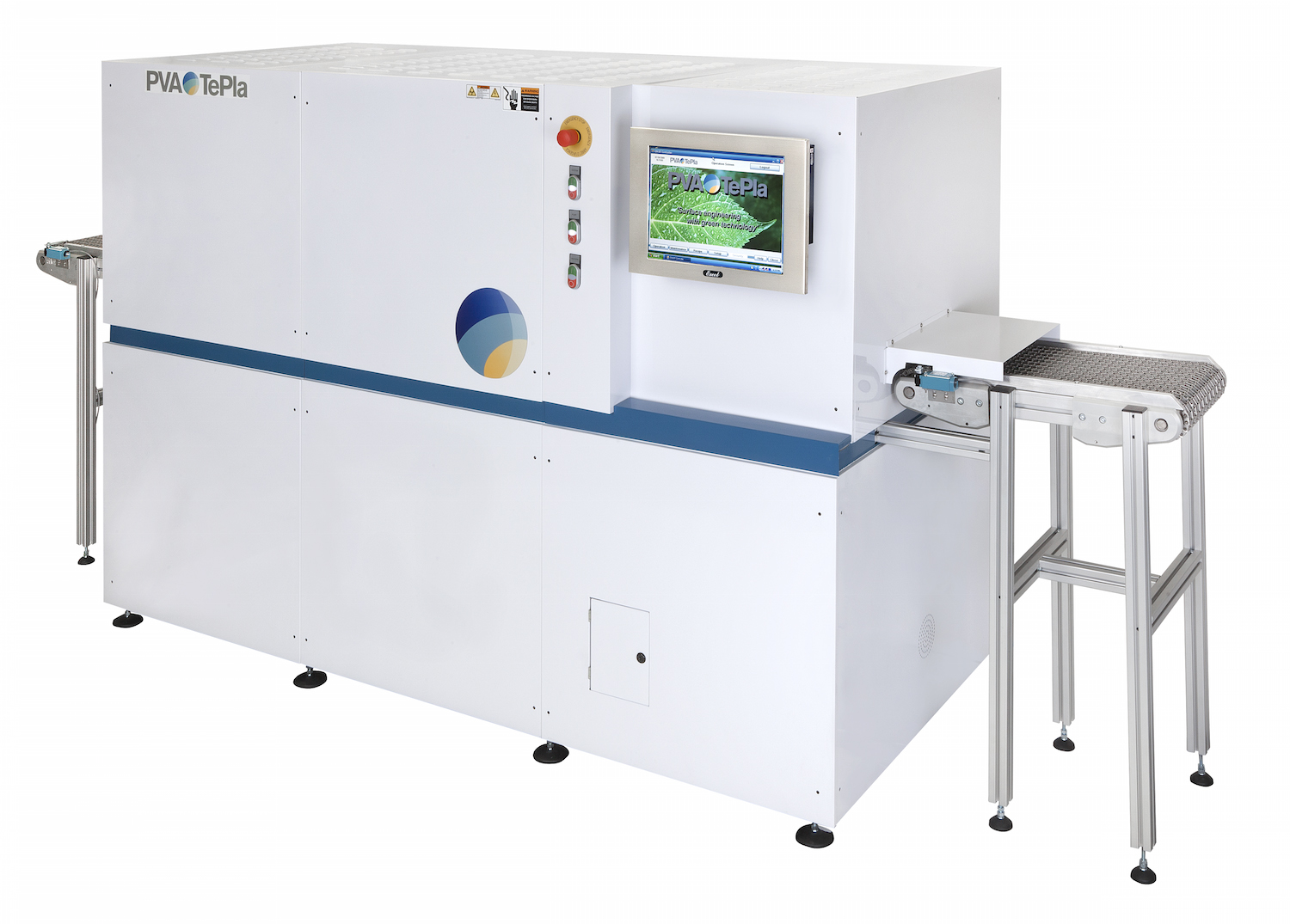Producers of modern medical devices are turning to unique, plasma-enhanced organic coatings to protect tools and electronic devices against corrosion, fluids, and debris, industry developers say.
These silica coatings are increasingly being applied using plasma-enhanced chemical vapor deposition (PECVD) techniques as an antimicrobial barrier, a primer to promote adhesion between stainless steel (SS) and proprietary coatings, to fight corrosion, or to create hydrophobic or hydrophilic surfaces, says Aaron Baldwin of MicroVention (Tustin, California), a company that offers neuro-interventional products including intraluminal stents (Figure 1), occlusion balloons, and polymer coils.
“We are always looking for unique and novel ways to make our products more robust and become the market leader, but to do that we need to bring more technology to our devices,” Baldwin says. “Often, that is going to involve some form of coating to functionalize the surface.”
“PECVD can take a product to the next level by addressing surface reaction issues such as biocompatibility or lubricity,” Baldwin adds. “It is a unique and eloquent way to deposit and enhance coatings, because it allows you to tailor the surface while retaining the bulk material’s properties that you need.”
For instruments composed of metallic materials like SS, or even exotic alloys, it can be difficult for a coating to adhere to the surface—thus leaving them susceptible to bacteria, clogging, and cross contamination.
But plasma system manufacturers like PVA TePLA America (Corona, California) say the application of these plasma-applied coatings can play a key role in new product development and in upgrading legacy medical devices under new, 510(k) guidelines from the U.S. Food and Drug Administration (FDA) (Washington, DC).
As a result, the medical device industry is aggressively investigating and applying plasma-applied coatings to products like SS guide wires, catheters (Figure 2), stents, and vascular surgical tools.

Organic Silicones as Feedstock
The PECVD process, which deposits silica from a vaporous, gas state to a solid state on a substrate, works by using organic silicones as feedstock. The best known options include hexamethyldisiloxane (HMDSO) and tetramethyldisiloxane (TMDSO).
HMDSO, in particular, is an affordable and flexible reagent that is commercially available in a high-purity, liquid form, Baldwin says. The colorless liquid can be plasma-polymerized to create surface coatings that are safe for medical use. Depending on the composition ratio of oxygen to HMDSO, the property of the surface can be hydrophobic or hydrophilic.
Because of this flexibility, developers maintain that HMDSO is an ideal choice for PECVD. By adjusting the parameters, chemists can tightly control the material to address a wide range of applications.
Anticorrosion, Antimicrobial Effects
One increasingly important role for HMDSO coatings (HMDSO is both water and gas repellent) is to protect against corrosion, since modern medical devices like hearing aids (Figure 3), intraocular devices, implantable sensors, and pacemakers often include small, microelectronic circuit boards.
To protect such electronics, HMDSO coatings are applied in a relatively thick coating of at least 1 μm, Baldwin says.
Meanwhile, if the HMDSO will be exposed to harsh chemical acids or bases, Baldwin notes that a thin, ~100-nm layer of polytetrafluoroethylene (PTFE) can also be applied.
Similarly, Baldwin says there are also strategies to achieve an antimicrobial surface using PECVD-applied chemistry, including cell harpoons, amphipathic surfaces, antiseptics bound to the surface, and non-stick coatings.
As an example of one application, PECVD can be used to embed nanosilver particles in a thin layer of organic silicone to prevent microbial adhesion and protect against corrosion, he says.
Nanosilver, or colloidal silver, has long been known for its antimicrobial effects. Using a PECVD process, the tiny silver ions can be embedded in a thin layer of silica to kill any bacteria present.

Primer Adhesion
Another use for HMDSO in medical devices is to promote adhesion between SS and proprietary coatings.
When the substrate is metallic, like SS or other exotic alloys, HMDSO can be used as an intermediate layer to improve the adhesion between the coating and the substrate.
Guide wires are a good example of this technology, Baldwin says. To ease insertion, SS guide wires are often coated with proprietary surface coatings to make them more lubricious. By applying a thin layer of silica, the lubricious coating can graft very nicely to a stainless surface, he says.
Silicones like HMDSO can also be applied as a linking chemistry for other surfaces that are difficult to adhere to, such as ceramics and PTFE. Baldwin notes that drug delivery devices utilizing ceramic nozzles with micron-sized openings can often become clogged. As a result, they are often coated with PTFE to prevent such an occurrence he says.
Specifically, depositing an HMDSO layer of ~100 to 150 nm is enough to promote the bond between the two substances, he says.
Hydrophobic, Hydrophilic Surfaces
For vascular surgical tools and instruments that become fouled with tissue debris or blood, PECVD techniques can provide a coating that keeps surgical tools cleaner and for longer periods.
This is typically accomplished by applying a hydrophobic coating to repel water or biological fluids, such as blood, Baldwin says. When used on vascular surgical devices, blood and tissue sheets can come off very easily—thereby allowing a surgeon to have better vision when cutting, for example.
Meanwhile, organic silicones can also be used to create hydrophilic surfaces with either polar or dispersive surface energy, he says. Potential applications include coating polypropylene or polystyrene plates with alcohol, or to facilitate protein bonding to the surface.
Development Partnerships

To develop the precise chemistries, added gases, and plasma equipment design, Baldwin believes a close, collaborative relationship is needed between medical device designers and equipment manufacturers.
For instance, Baldwin says his company recently began consulting with PVA TePla on a project to determine the benefits of coatings for stents. This partnership was made easier by the fact that the two companies already had an established relationship, with many of the manufacturer’s plasma chambers already being utilized to aide in coating adhesion.
Specifically, Baldwin recommends collaborating directly with the manufacturer. In his case, Baldwin’s company went to the manufacturer’s lab in Corona, California, where the manufacturer allowed the designer to brainstorm with the technical team and run experiments together.
“When we start on something new, instead of poking around in the dark, it is better to get expertise involved,” Baldwin says. “[Manufacturers] are very willing to do experimentations—often free of charge—to get the project moving and improve the characteristics of the system and the chemistries involved. We were able to go there and work on their plasma machines (Figure 4) to determine our parameters and evaluate the equipment.”
As a result, Baldwin says, each system can be designed to meet the specific requirements of each application.
Source: PVA TePLA America, pvaTePlaamerica.com. Contact Ray Chen, PVA TePla America—E-mail: rayc@pvateplaamerica.com. Adapted from a press release by Jeff Elliott, technical writer.